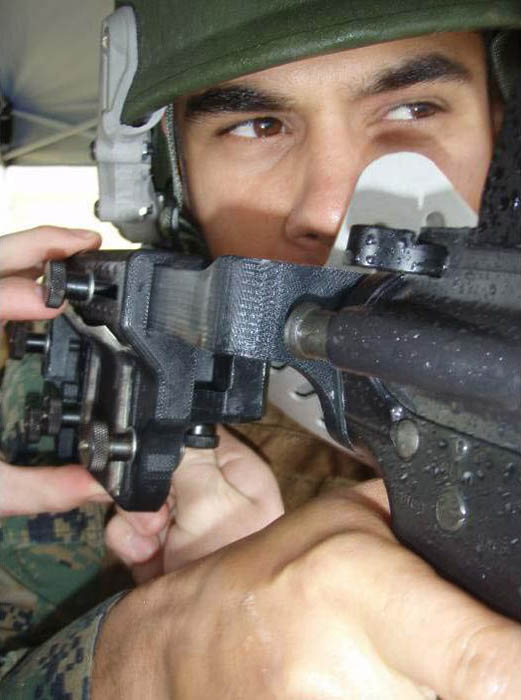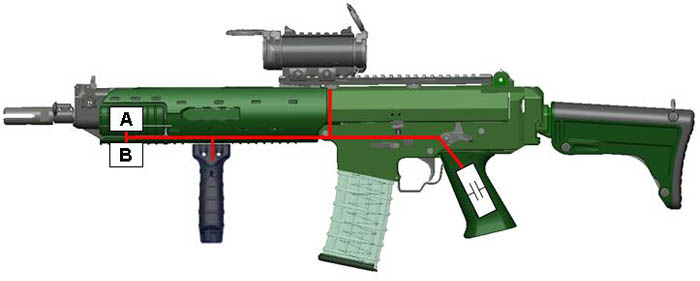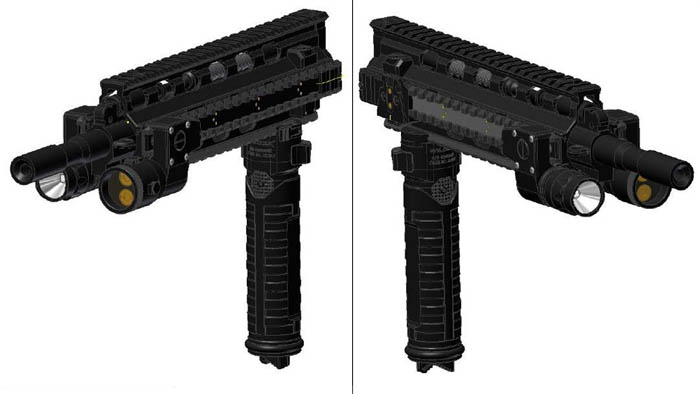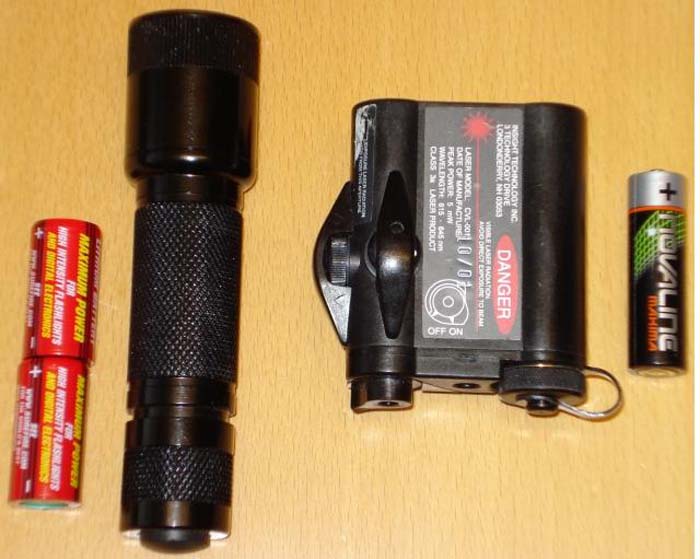By Félix A. Alejos Cutuli
pictures courtesy of NATO unlesss otherwise stated.
On May 8, 2009, the NATO Army Armaments Group (NAAG), Land Capability Group 1 Dismounted Soldier (LCG1-DS) approved the STANAG 4694. After that standard code is the NATO version of what we already know as a Rail Interface System (RIS). Although useful on any small arm, the rail interface system is mainly associated with the individual rifle.
It can be argued that the RIS, of which the STANAG is the latest refinement, is the foremost advance in the small arms field since the introduction of the assault rifle. The assault rifle has not changed much since 1942. If we compare an MKb 42 (H), the first assault rifle, to one of the latest, say the AR160, we can easily recognize the type and their respective operators would have little trouble adapting to each other’s weapon.

Of course, there have been many changes and improvements. New materials, cartridges, different operating principles, foldable and adjustable buttstocks and even easily interchangeable barrels and calibres: but no real breakthroughs in the package. The soldier still has a selective fire rifle firing an intermediate cartridge.
The most productive trend in the evolution of these small arms has been the move to add accessories, mainly sights (but also other weapons, lights, handles, target designators, etc.) reaching its highest point with the introduction of the Rail Interface System which makes the rifle (or any small arm) a true weapons “system” of unprecedented usefulness and versatility.
The NATO designation was no surprise and came in a timely fashion, as it has been announced that there’s a need for several NATO countries to replace their current assault rifles between now and 2020.

Many readers are probably aware that the Picatinny or MIL-STD-1913 rail already had a NATO designation, STANAG 2324, as had equivalent devices from other countries like those Canada (C7/C8), Germany (G36 Dovetail), United Kingdom (AI L96/AW Dovetail and SUSAT Dovetail) and even the United States (XM8 PCAP). What NATO has done is to take one of the best solutions (and the most issued inside the Alliance’s armies) as a base for an improved standard for all members, solving the interoperability problems that had surfaced in recent years, affecting not only small arms but all kinds of device mounting solutions, including helmet mounting systems.
As it follows common sense, an accessory mounting system should not hamper proper weapon use and manipulation. As most accessories’ function is to improve marksmanship, the mounting system must insure proper zeroing and also be able to withstand harsh combat conditions without performance degradation. The working group identified considerable margins of improvement relative to rail straightness and zero retention and repeatability, resulting in the following changes incorporated in the new design:

- Metric reference drawing.
- The MIL-STD-1913 rail uses the lateral “V” surfaces both for clamping and accessory alignment. The NATO work-group found that using the top rail surfaces for accessory alignment, leaving the lateral angled surfaces for pressure clamping, results in big improvements in zero retention and repeatability.
- Reduction of straightness tolerances by 50%.
- Adjustment of some other measurements.
- Addition of some new measurements and tolerances.
This has resulted in an improved product standardized in the allied armies, but before dumping your current rails and expensive accessories, keep in mind that the new standard is fully backwards compatible with the previous MIL-STD-1913, so, no allied army, nor citizen, has to discard valuable equipment on behalf of international standardization.

A Look at the Future
This pretty much resumes the current military standards and answers the requirements for zeroing issues, but, mounting a rail interface system and so many accessories surely affects how a rifle handles and this opens the second part of the article that is looking into what NATO is preparing for the future.
As stated before, an accessory mounting system should not affect proper weapon manipulation. Anyone who has seen a picture of a rifle with a handguard rail system in place can realize how unwieldy it looks. Add to that a suite of accessories, as can be seen festooning the rifles of our soldiers, and there can be no doubt that the addition of so much volume and weight can have a great impact in how that rifle handles. NATO also realized that this amount of forward weight can be detrimental in handling the rifle in short range combat, the kind of fighting so prevalent in current and projected scenarios.
From an ergonomic perspective, the main offender is the addition of weight, especially to the forward part of the rifle, around the handguard, displacing the center of gravity forward and so affecting the balance of the system. It was also found that most accessories use batteries for power supply. Those batteries represent around 50% of the weight and volume of the accessories. But the proliferation of different types of batteries, used not only for rifle accessories but also for other equipment, has also created other associated issues. For instance, a recent Canadian Army report states that, during the course of a two week operation in Afghanistan, a rifle company used up more than 17,500 AA batteries, which raises an obvious logistic issue, especially for the smaller units whose missions may keep them away from their natural supply channels.
All this points to a need to reduce the number and types of batteries to be used in the different infantry equipment, including those of the “soldier system,” and also the desirability of developing a centralised power supply system for the rifle mounted accessories, which could allow to store a single common battery into the buttstock or pistol grip, thereby repositioning the center of gravity to a more convenient location. In fact, the battery may even be taken completely out of the rifle, having a common power supply for the “soldier system” worn on the soldier’s web gear.

NATO is working on a rail interface system capable of supplying power to the accessories attached to it. To this end the NATO working group mentioned earlier, with participation from Canada, Germany, Holland, Italy, Norway, Romania, Slovakia, Spain, Sweden and the U.S. Army and U.S.M.C. (France and the United Kingdom withdrew in 2006 and 2008 respectively) is working in close cooperation with NATO’s LG/1 Dismounted Soldier Systems. Their first common task is to get data on the batteries in use throughout NATO and the power demands of the different devices, in order to define a power requirement for a typical soldier’s daily mission, which will be used to create a baseline requirement for future systems.

Several NATO countries (Canada, Germany, Sweden and the United States) have contacted the industry for powered rail technology demonstrators. Colt is proposing two technologies to Canada. One is an induction system by Komtech Mfg., Inc. and the other is a system based on elastomeric contacts from Greene Tweed, that will consist of a series of elastomer protected electric contacts which will only let power through when compressed by the attached accessory. Both will allow wireless power transfer between the rail and the mounted accessories. Additionally, both of them would allow mounting accessories in different positions on the rail; the powered rail system being able to identify which accessory is in each position in order to supply it the necessary power. Both technologies are capable of withstanding harsh combat conditions. The battery may not even be in the weapon system but be part of the soldier system and transfer power trough a special glove connector, also wireless. This last feature, however, may be debatable, as it’s obviously important to have some redundancy in case you need to grab your rifle in a hurry and be separated from or have the rest of your gear damaged. Also, as the soldier systems like the Raytheon Android Tactical System and the Joint Battle Command-Platform JBC-P are taking the shape and size of smart phones it doesn’t seem that attaching them to external power supplies may be the best choice. There’s also a growing need to have a personal radio, a role that may be taken by the soldier system, at least for short range (squad level) communication, contributing to power demands and the convenience to swap accessories (like cameras or night vision) between weapons and personal gear (like helmet mountings). In this writer’s opinion the most promising path will be to have dedicated batteries for weapon, soldier system and radio but it will be very advantageous to retain the capability to tap power from each other in case of need. So it would be interesting to try to devise a common connector and output standard, be it wireless or not.

Once you start thinking about a powered rail, you naturally progress to considering how that will affect future sensors attached to it and also consider the possibility and convenience of adding a data transfer system, in order to be able to share sensor input with the soldier’s and external systems. This opens another field for development and standardisation. In fact there are WiFi capable target acquisition devices on the market.
All of these are middle term projects but they will surely enter service as a natural evolution of current systems.
NATO is also working on other weapon and soldier improvements as it’s currently investigating optimum foregrip location, and a special buttstock that would allow use of a rifle while wearing a face protection mask. There are also more possibilities for standardizing other items as might be magazines, pressure switches, flash hider, muzzle threads and even bayonet lugs. So there’s still a lot of work to be done before we see the assault rifle reach the end of its career.

| This article first appeared in Small Arms Review V16N2 (June 2012) |












